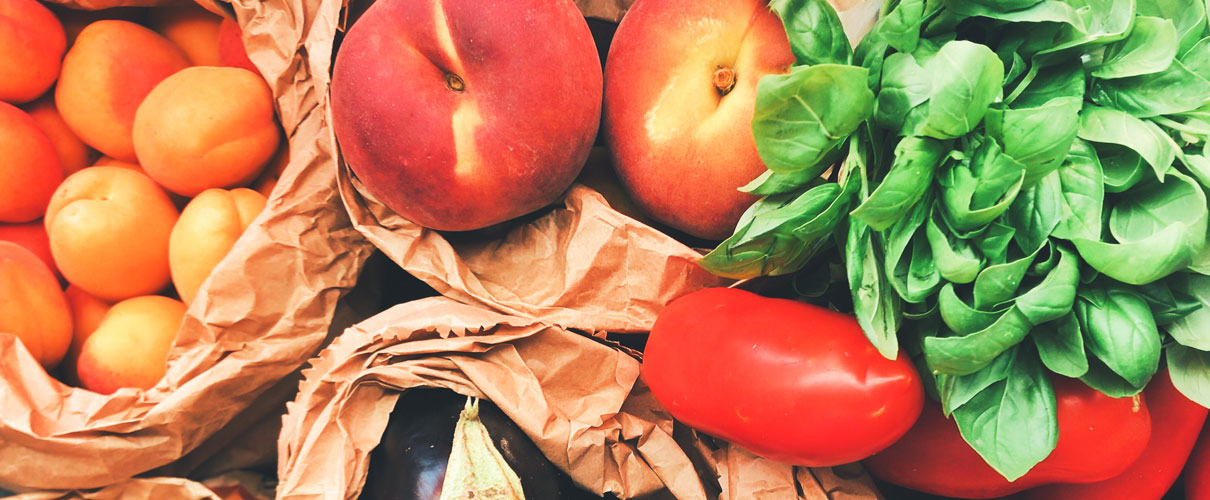
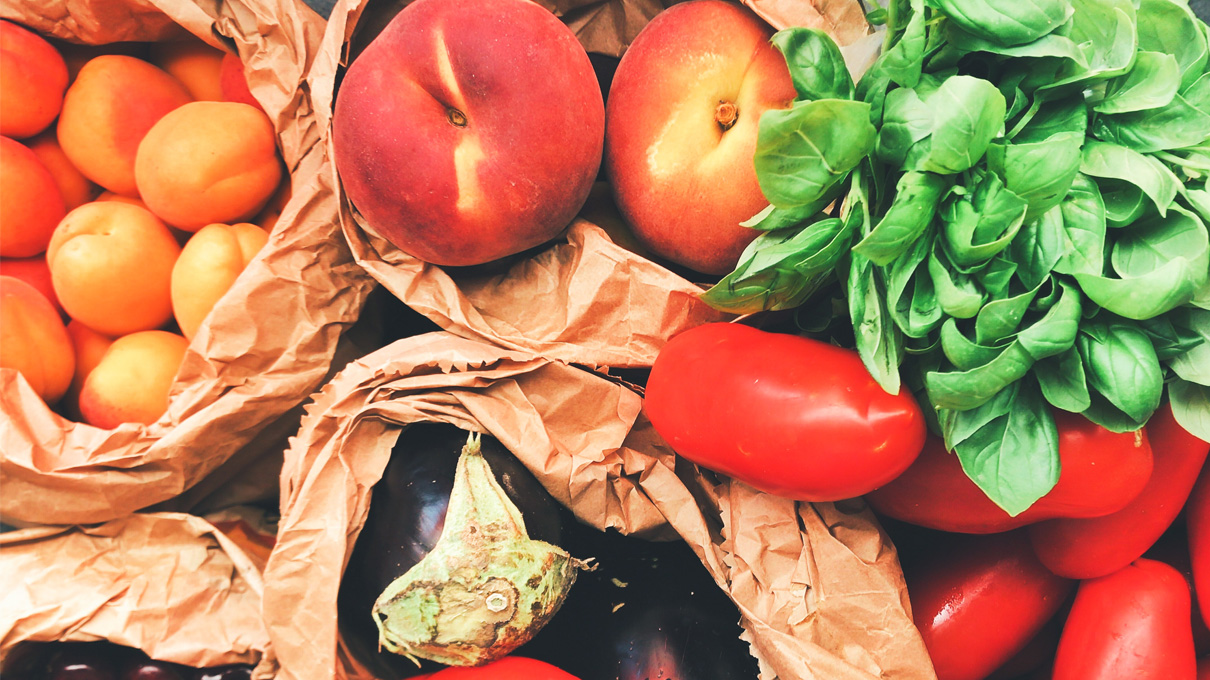
Food waste: A hidden danger
A few months back we published an article, which briefly touched on the overproduction of food, and the impact it has on people and the environment [1]. The article noted that there has been a dramatic rise in the amount of food being produced and then wasted. In this piece the focus will be on the severe repercussion that food waste has on the individual and corporate level. Considering that the World Economic Forum reported in September this year that food waste is a more vital issue then plastic, it is an aped time to learn and understand the issue [2].
It seems to be a fairly simple concept: throwing away food is food waste [3]. Anytime the food in a fridge goes bad because it wasn’t eaten, or food from the pantry is purged since it is past its expiration date, it contributes to food waste on an individual and household level [4]. Ultimately food waste per household comes down to a lack of planning, over buying, or simple negligence.
In addition to the individual level there is an issue with restaurants, hotels, and grocery stores throwing away massive amounts of goods [5]. Restaurants and hotels tend to over prepare food in order to be ready for high customer volumes and reduce their costs. However, while this might help them in the short term, when the food isn’t consumed it finds its way to the garbage can [3], [4]. Grocery stores are not allowed to sell food too close to its expiration date and must throw these goods away, too [6]. All this waste adds up over time and amounts to a giant problem.
The biggest culprit is a combination of grocery stores, and where the food originates. Errors in industrial processing do occur and, in order to respect food safety policies, far too often perfectly edible food is required to be scrapped [7]. Likewise, the cosmetics standards of the food industry cause an enormous amount of food waste [6], [10]. These standards boil down to the stores wanting to sell visually appealing food since they believe the consumer will not purchase “deformed” fruits and veggies [4]. Food also gets lost, or damaged during transportation, as well as the possibility of it not having fully ripened (or over ripened) during transportation resulting in the food being thrown [5].

Two tons of parsnips rejected by grocery stores due to cosmetic standards. The farmer was able to donate the food to a local charity, but no longer produces parsnips due to the amount of waste. Source
To acquire an understanding of the basics it is best to look at the numbers. The United Kingdom is the most wasteful country in Europe, tossing 18 million tons of food yearly [6]. The European Union reports its member nations waste about 88 million tons, while the US reports to throw away 38 million tons of food annually [8], [9], [28]. Adding in all other regions and nations in the world, the yearly total of food wasted is 1.6 billion tones [10]. That is one-third of all food produced.
Not only is the figure shocking, it is rather disheartening. It was estimated in 2017 that the amount of food wasted could feed over 2 billion people [11]. Considering that there is an estimated 815 million hungry people in the world, we could potentially solve world hunger and malnourishment rather quickly [12]. The bottom line is there’s more than enough food produced, but too much of it ends up wasted and never reaches consumers [10].
Perhaps an interesting element of this topic is that most of the food waste is made up by fruits and vegetables, which often rot before arriving to their destination [3],[4], [8], [10]. The food also gets lost during transportation, and carbon emissions released during the transportation compounds the issue [9]. This lends credence to the argument that buying local and seasonal food is more sustainable [13]. We aim to dedicate a piece exclusively on this topic later on.
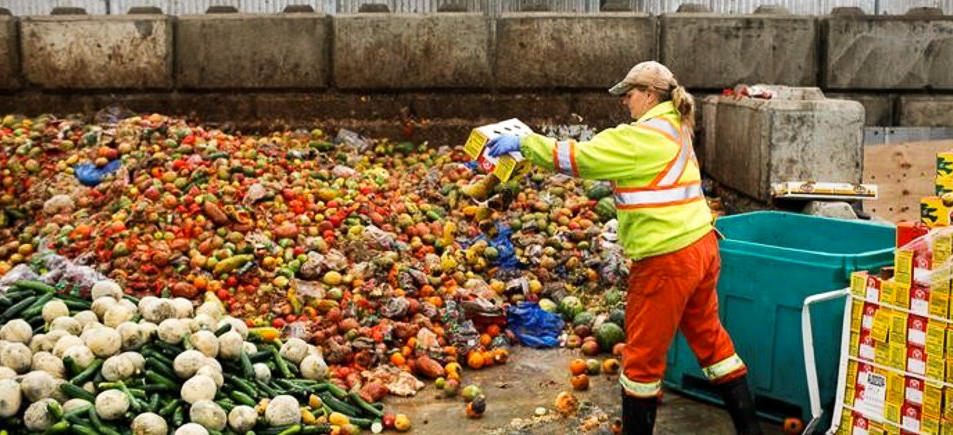
"Pre-consumer food waste is stockpiled before being feed to black soldier fly larvae at the Enterra Feed Corporation in Langley, British Columbia, Canada. Picture taken March 14, 2018." Source: REUTERS/Ben Nelms
Another serious problem with food waste is the amount of carbon emissions that it causes. In fact, it is the third largest cause of carbon emissions worldwide; food waste causes more greenhouse gasses then plastic and oil production [10], [13], [25]. There are 4.4 billion tons of carbon emissions released every year from food that is never eaten, and financially the amount of waste an estimated $940 billion [14].
What is more concerning is that the problem of food waste is consistently escalating. The Boston Consulting Group predicts in one of its reports that by 2030 there will be over 2.1 billion tons of food thrown away each year [10]. That means as a population 66 tons of food will be tossed every second [7]. All this waste will amount to over $1.5 trillion in financial terms [10]. It is incredibly beneficial for businesses to minimize their food waste and improve their profitability through lowering costs [15].
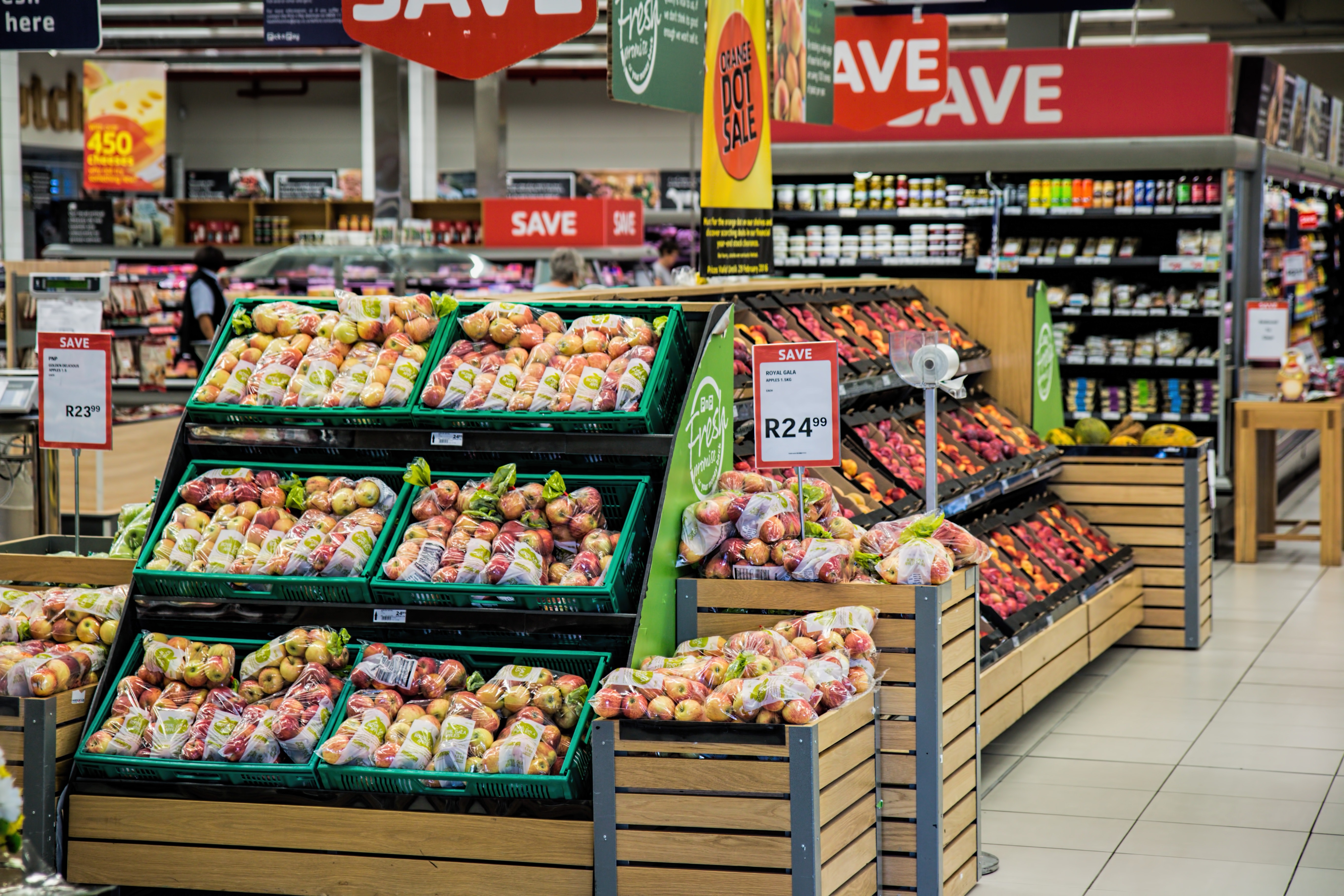
Grocery stores don’t like to sell “ugly” products in the belief that most consumers won’t buy them. The “best buy”, “sell by”, and “best before” dates also tend to be a source of confusion for customers resulting in massive food waste.
Despite the gravity of the situation, there is some good news. Most governments and NGOs have identified where the issues of food waste occurs [4], [8]. Over 50% of food waste starts with overproduction, which in turn is caused by the cosmetic standards of the food industry [7].
There are some actions being taken towards this, albeit not enough to reverse the trajectory at this point. The issue spiked in 2016 with some news coverage and a few governments taking action. That year Denmark launched its first food waste store which uses the "thrown away" food from other supermarkets and sells it for less [16]. Italy passed a law which incentivizes business to donate unused food to charities and food banks, by lowering their trash taxes given they make the donations [17]. The law also allows businesses to donate food passed its sell-by date, if it is not spoiled. France legislated a similar law, but instead it fines businesses, which throw away food [18]. The EU also formed a commission to combat food waste in 2016 [19].
Although there was this spike of anti-food waste activity in 2016, not much has been done in Europe since then. However, on the international front countries, are waking up to the dire consequences of the issue [28]. United States, United Kingdom, and Japan all are passing laws to simplify the “best buy” date, since far too much perfectly good food gets thrown out because it’s past it “best buy” date [2]. In the US Cities like Austin, and San Francisco are aiming to prevent food waste with new laws [20]. International Chefs are also fighting the issue in their own restaurants [21]. Douglas McMaster and Nick Balla run their own zero waste restaurants, while Mathias Dahlgren and Jamie Oliver partner with private agencies to sell or donate unused food in his restaurants [22], [23], [24]. These are just a few of hundreds who are fighting to end food waste.

There is a new trend among chefs to not waste food. One aspect of this is using every part of the product, and another is buying only what is in season (to prevent rotting).
Still it comes down to what the individual does, and the actions they take to combat this problem. The EU estimates that most of the food waste is caused by households and not industries, which indicates we can all take a part in changing this.
If you’re curious as to what the actual impact of your monthly food waste is, start tracking it. It’s Fresh created this food waste calculator which breaks down how much money was wasted, and carbon emission created [26]. Another method, which can help you cut down on food waste, is to plan your meals and groceries list ahead of time. Also, consider simply buying less food, and if you have too much food, donate it to a food bank or charity.
There are also innovative solutions such as the app Olio which allows you to sell extra food to your neighbors [28]. Also, the Stockholm based company Karma developed an app which allows businesses to sell their extra food directly to consumers at a lowered price [24]. They not only work with restaurants and hotels, but also have partnered with several major Swedish grocery chains, allowing them to solve the issue from more than one angle. It’s brilliant in combating the food waste problems, and is available in most Swedish cities, and London. Since its launch Karma has saved over 210 tons of food [24].
By solving this issue, we can tackle three major problems at once: world hunger, carbon emission, and overproduction. Therefore, while we should exert a healthy influence and demand that our supermarkets and producers become more responsible and instill sustainability in the core of their business practices, we must also look to ourselves and do our best not to waste food. As with any issue, the solution does not spring from pointing fingers and finding culprits, but by taking action and supporting each other to make the best of our world.
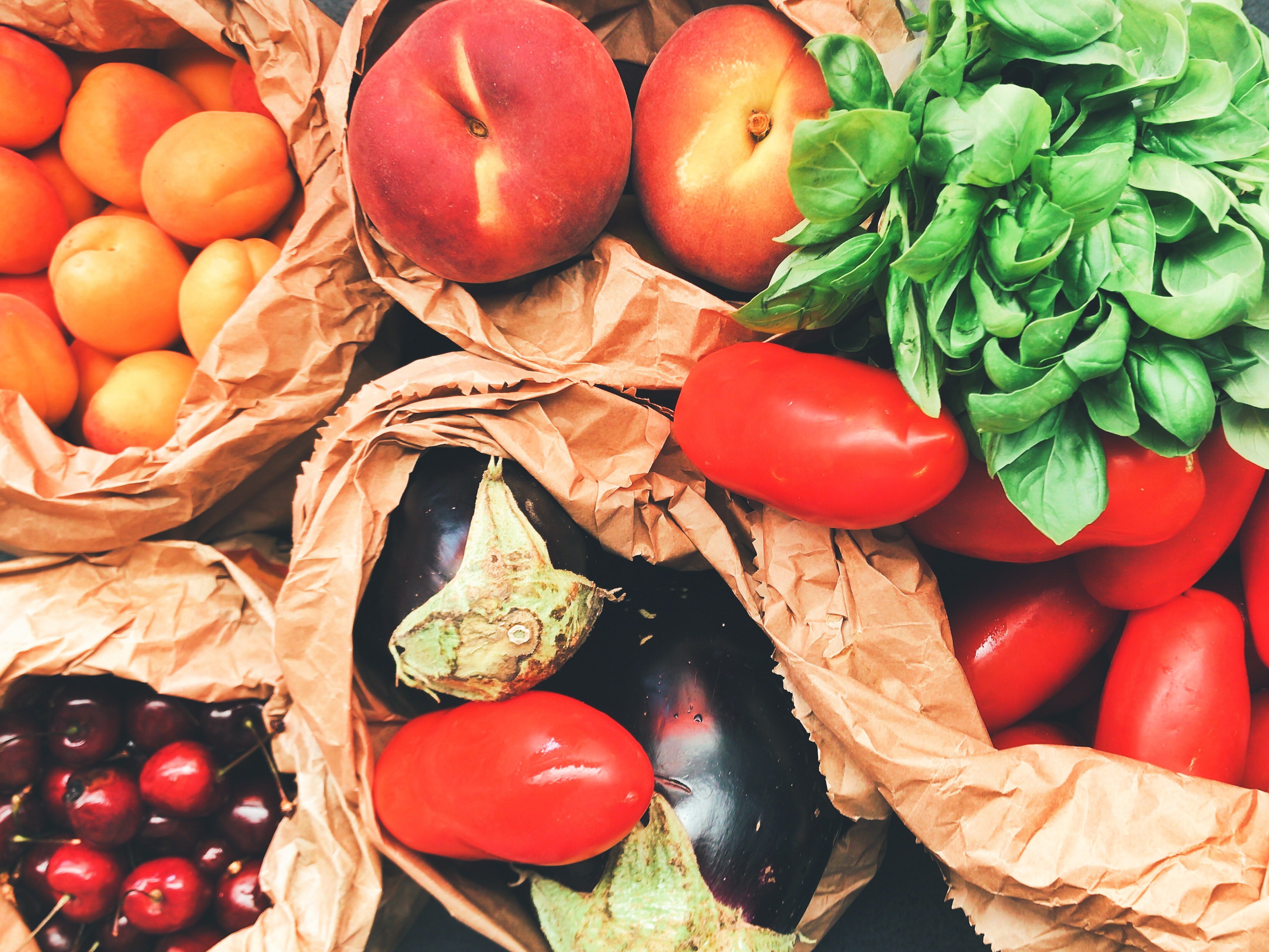
Fresh fruits and veggies are wonderful! However, it is better to remember a few things such as: where is it sourced, if it’s in season, don’t overbuy, and can you use all of it?
Last Updated: 2018.11.13
[1] Eco by Naty, 2018. “Veganism and the Environment” [Online] Available at: [LINK]
[2] Goodwin,L., 2018. “As the world fights plastic waste, could food waste be next?” The World Economic Forum. [Online] Available at: [LINK]
[3] Livsmedelsverket, 2018. "Commission to reduce food loss and waste" Swedish National Food Agency. [Online] Available at: [LINK]
[4] UN Environment, 2018. “Food and Food Waste” United Nations Environment. [Online] Available at: [LINK]
[5] Lyons, K., 2015. “Cutting food waste by a quarter would mean enough for everyone, says UN” The Guardian. [Online] Available at: [LINK]
[6] Ratcliffe, R., 2018 “Food waste: alarming rise will see 66 tonnes thrown away every second” The Guardian. [Online] Available at: [LINK]
[7] Szczepanski, M., 2018 “How Overproduction is Food Waste’s Biggest Culprit and Opportunity” Waste 360. [Online] Available at: [LINK]
[8] EU, 2018. “Food Waste” European Union. [Online] Available at: [LINK]
[9] Mooney, C., 2018. “The staggering environmental footprint of all the food that we just throw in the trash” [Online] Available at: [LINK]
[10] Hegnsholt, Unnikrishnan, Pollmann-Larsen, Askelsdottir, and Marine Gerard, 2018. “TACKLING THE 1.6-BILLION-TON FOOD LOSS AND WASTE CRISIS” The Boston Consulting Group, [Online] Available at: [LINK]
[11] Huber, C., 2018. “World’s food waste could feed 2 billion people” World Vision. [Online] Available at: [LINK]
[12] Deen, T., 2018. “Food Waste Enough to Feed World’s Hungry Four Times Over” Inter Press Service. [Online] Available at: [12]
[13] Khasaya Oniang'o, R., 2018. “Why what we eat is crucial to the climate change question” The Guardian. [Online] Available at: [LINK]
[14] Fischer, J., 2017.“Appetite for destruction: to save the planet, we must fight food waste” The World Economic Forum. [Online] Available at: [LINK]
[15] Bacchi, U., 2017. “Reducing food waste is good for business: study” Thomson Reuters Foundation. [Online] Available at: [LINK]
[16] Payton, M., 2016. “Denmark opens first food waste supermarket selling surplus produce” The Independent. [Online] Available at: [LINK]
[17]I Payton, M., 2016. “Italy to change law to make all supermarkets give unsold food to needy” The Independent. [Online] Available at: [LINK]
[18] Payton, M., 2016. “French Supermarkets banned from throwing away and spoiling unsold food” The Independent. [Online] Available at: [LINK]
[19] EU, 2018. “EU actions against food waste” The European Union. [Online] Available at: [LINK]
[20] Neelis, K., 2018. “This US city has banned restaurants from throwing away food waste” The World Economic Forum. [Online] Available at: [LINK]
[21] Bacchi, U., 2018. “In Britain, chefs stir up food waste revolution in the kitchen” Reuters. [Online] Available at: [LINK]
[22] Nau, S., 2018. “How one chef is fighting food waste. And how you can, too.” Stone Pier Press. [Online] Available at: [LINK]
[23] The Bull Market, 2018. “OUR STORY” The Bull Market. [Online] Available at: [LINK]
[24] Karma, 2018. “Mathias Dahlgren” The Karma App. [Online] Available at: [LINK]
[25] Eco by Naty, 2018. “Why we should stop using oil based plastics” [Online] Available at: [LINK]
[26] It’s Fresh, 2018. “Food Waste Calculator” [Online] Available at: [26]
[27] Olio, 2018. “What is OLIO?” Olio Ex. [Online] Available at: [LINK]
[28] Center for health statistics, 2016. “National Health and Nutrition Examination Survey 1999–2016” Center for Disease Control. [Online] Available at: [LINK]
[2] Goodwin,L., 2018. “As the world fights plastic waste, could food waste be next?” The World Economic Forum. [Online] Available at: [LINK]
[3] Livsmedelsverket, 2018. "Commission to reduce food loss and waste" Swedish National Food Agency. [Online] Available at: [LINK]
[4] UN Environment, 2018. “Food and Food Waste” United Nations Environment. [Online] Available at: [LINK]
[5] Lyons, K., 2015. “Cutting food waste by a quarter would mean enough for everyone, says UN” The Guardian. [Online] Available at: [LINK]
[6] Ratcliffe, R., 2018 “Food waste: alarming rise will see 66 tonnes thrown away every second” The Guardian. [Online] Available at: [LINK]
[7] Szczepanski, M., 2018 “How Overproduction is Food Waste’s Biggest Culprit and Opportunity” Waste 360. [Online] Available at: [LINK]
[8] EU, 2018. “Food Waste” European Union. [Online] Available at: [LINK]
[9] Mooney, C., 2018. “The staggering environmental footprint of all the food that we just throw in the trash” [Online] Available at: [LINK]
[10] Hegnsholt, Unnikrishnan, Pollmann-Larsen, Askelsdottir, and Marine Gerard, 2018. “TACKLING THE 1.6-BILLION-TON FOOD LOSS AND WASTE CRISIS” The Boston Consulting Group, [Online] Available at: [LINK]
[11] Huber, C., 2018. “World’s food waste could feed 2 billion people” World Vision. [Online] Available at: [LINK]
[12] Deen, T., 2018. “Food Waste Enough to Feed World’s Hungry Four Times Over” Inter Press Service. [Online] Available at: [12]
[13] Khasaya Oniang'o, R., 2018. “Why what we eat is crucial to the climate change question” The Guardian. [Online] Available at: [LINK]
[14] Fischer, J., 2017.“Appetite for destruction: to save the planet, we must fight food waste” The World Economic Forum. [Online] Available at: [LINK]
[15] Bacchi, U., 2017. “Reducing food waste is good for business: study” Thomson Reuters Foundation. [Online] Available at: [LINK]
[16] Payton, M., 2016. “Denmark opens first food waste supermarket selling surplus produce” The Independent. [Online] Available at: [LINK]
[17]I Payton, M., 2016. “Italy to change law to make all supermarkets give unsold food to needy” The Independent. [Online] Available at: [LINK]
[18] Payton, M., 2016. “French Supermarkets banned from throwing away and spoiling unsold food” The Independent. [Online] Available at: [LINK]
[19] EU, 2018. “EU actions against food waste” The European Union. [Online] Available at: [LINK]
[20] Neelis, K., 2018. “This US city has banned restaurants from throwing away food waste” The World Economic Forum. [Online] Available at: [LINK]
[21] Bacchi, U., 2018. “In Britain, chefs stir up food waste revolution in the kitchen” Reuters. [Online] Available at: [LINK]
[22] Nau, S., 2018. “How one chef is fighting food waste. And how you can, too.” Stone Pier Press. [Online] Available at: [LINK]
[23] The Bull Market, 2018. “OUR STORY” The Bull Market. [Online] Available at: [LINK]
[24] Karma, 2018. “Mathias Dahlgren” The Karma App. [Online] Available at: [LINK]
[25] Eco by Naty, 2018. “Why we should stop using oil based plastics” [Online] Available at: [LINK]
[26] It’s Fresh, 2018. “Food Waste Calculator” [Online] Available at: [26]
[27] Olio, 2018. “What is OLIO?” Olio Ex. [Online] Available at: [LINK]
[28] Center for health statistics, 2016. “National Health and Nutrition Examination Survey 1999–2016” Center for Disease Control. [Online] Available at: [LINK]

